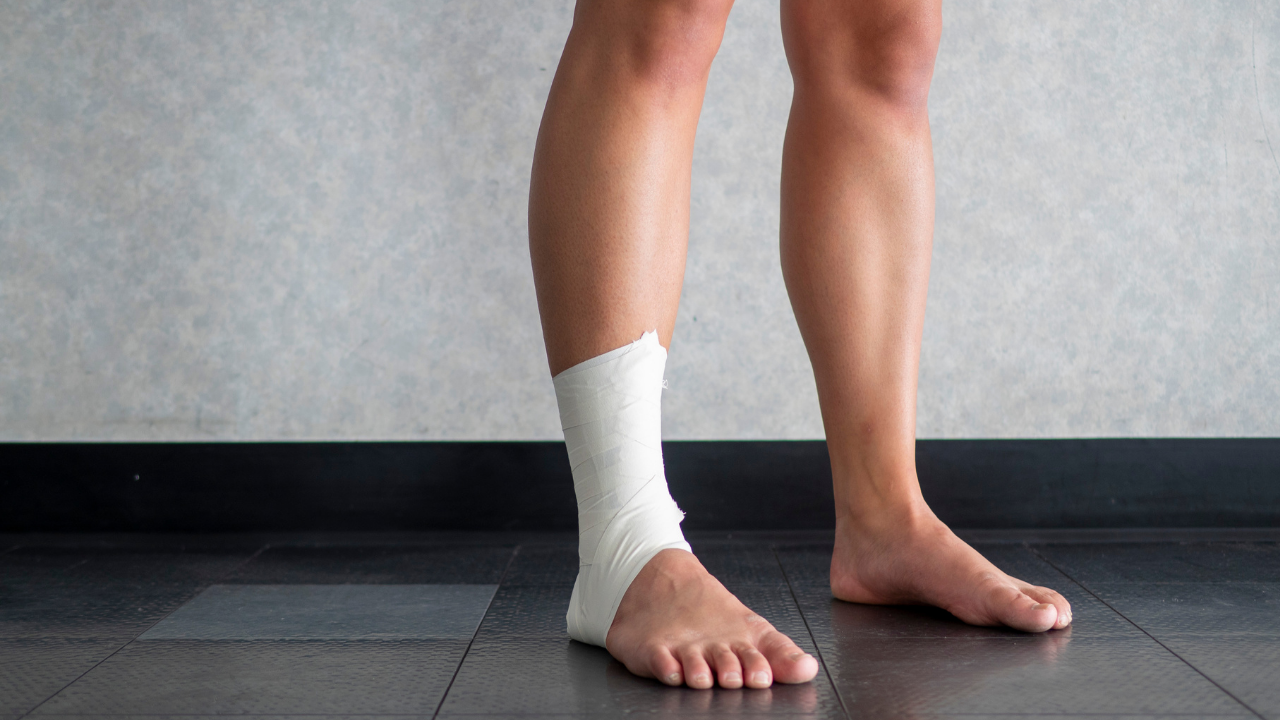
Before any athletic practice or competition, you’ll often see rows of athletes lined up in the training room having their ankles, wrists or other various joints taped so they can go play. If you’re like most athletes, you don’t think much about it except that you need to get to practice early in order to be ready on time. This was my mindset, too. Every day before college gymnastics practice, I stopped into the training room to have my ankle taped. So did many of my teammates.
You might be wondering, what was wrong with my ankle? Actually, I didn’t have any idea. Was I doing any therapy on my ankle to recover so I wouldn’t have to tape it? Absolutely not. Why? Because the athletic community expects and accepts it!
We believe that taping isn’t something to be avoided. Instead, it’s just a normal part of the game. Additionally, we believe that the body is weak, so we need to brace it from the outside. We think our body needs external support to compensate for a lack of internal stability.
After my years in gymnastics, I didn’t give my ankle much thought. To be honest, I forgot about it entirely! Well, until recently. In the last month, I have been working with different practitioners on my continual quest for body improvement. All of these three professionals noticed something with my right lower leg. Also, they all asked if I had ever had an injury to that foot or ankle. And actually, I didn’t immediately recall the problem with my ankle! However, by the time the second healer asked the question, I had regained my memory.
After talking to these professionals, I wondered, could it be that all those years of taping my right ankle contributed to my stubborn, ongoing back pain and dysfunctional right hip that surfaced nearly 15 years later?
So, what happens when we immobilize a joint for the sake of sports participation? It’s clear that taping is merely a band aid that allows the game to go on. To explain, in my case, even though I had my ankle taped, it lacked natural function and range of motion, while the movement demands did not decrease. Thus, I continued to ask my body to do the same amount of work at the same intensity without full use of my ankle. Sounds like a perfect situation for lasting compensations to develop! These compensations will result in injuries like overly stressed joints, not to mention the damage that will occur to the ankle itself.
As you can see, restricting the motion in a joint is not a long term solution to pain. Although taping can help athletes return to the field, court or trail, it should only be used short-term while the injury is healing. Also, you should only do it in conjunction with rehabilitation. Perpetual taping weakens the joint, furthering the imbalance and prolonging the recovery. Dependence on this aid sets athletes up for future pain and disability. Joint stability can and should be regained so the athlete does not become dependent on taping.
Joint taping not only causes physical damage but also impacts the athlete’s psyche. The lesson is to ignore pain, dissociate from the sensations in the body. If something hurts, brace it and go on. The phrase “No Pain, No Gain” runs deep and strong in sports. The habits and mentality we develop regarding pain and injuries in our formative athletic years stay with us for life. As we age we may no longer tape our joints, but instead, we graduate to store bought or prescription restrictive braces, pain relieving medications, numbing injections, surgery and joint replacements.
I would like to see the day when young athletes are taught to respect their bodies and not play through the pain. To address their stability and mobility issues to regain optimal health. And even more ideally, to correct the imbalances before the body is hurt. This will enhance their ability to enjoy lifelong, pain free athletics.



